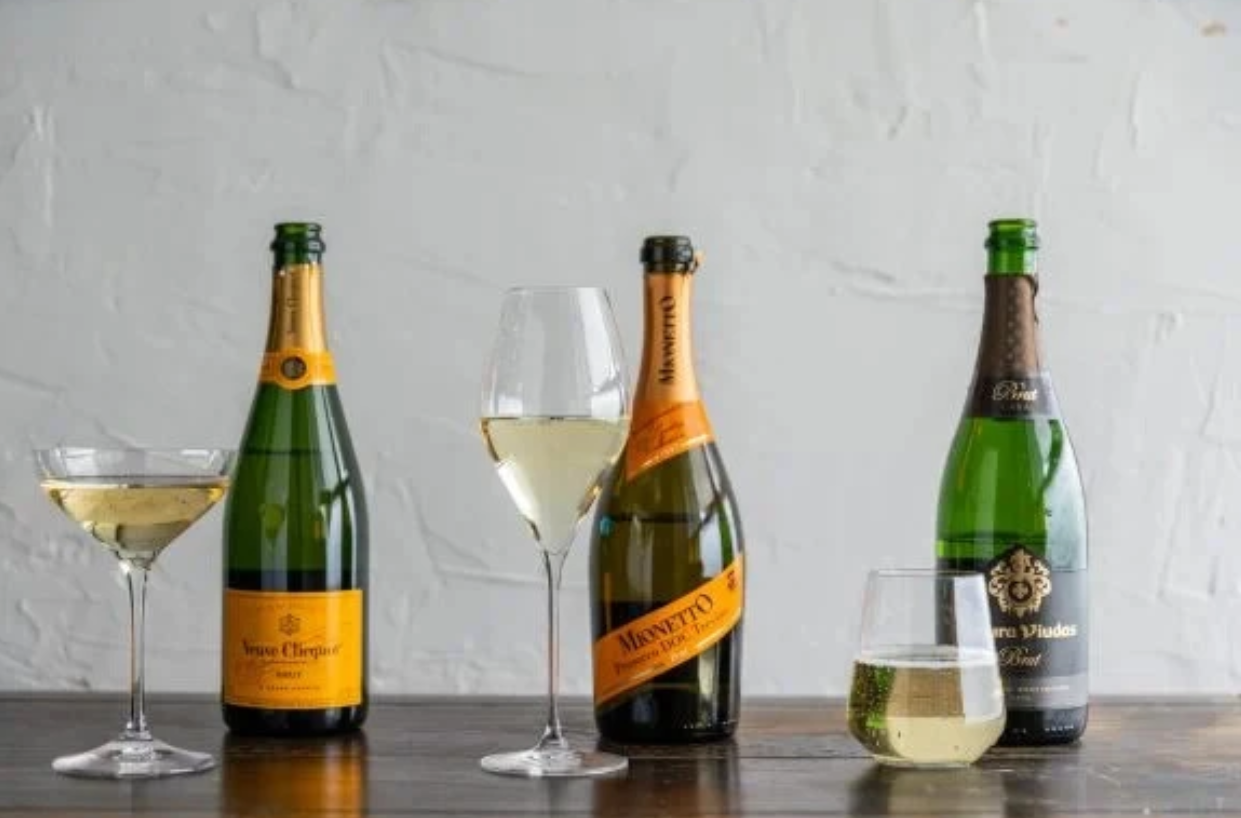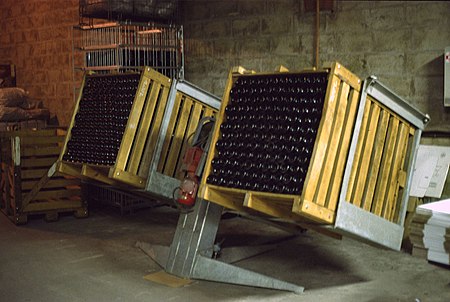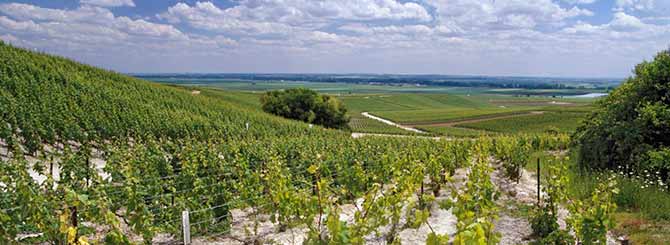With its captivating effervescence, sparkling wine is a beloved beverage enjoyed worldwide, often gracing celebrations and special occasions. While the terms "Champagne," "Cava," and "Prosecco" are sometimes used interchangeably, these sparkling wines possess distinct characteristics that set them apart. This article delves into the nuances of each, exploring their unique production methods, grape varieties, regions of origin, taste profiles, and price points, ultimately guiding you through the delightful world of bubbly.

Interestingly, the Cava industry traces its roots back to the 1870s when Josep Raventós, inspired by his travels through Europe, introduced Champagne-style winemaking to Spain. Initially, these Spanish sparkling wines were stored and aged in caves, giving rise to the name "Cava," which translates to "cave" or "cellar" in Spanish.
Production Methods: A Tale of Two Fermentations
The defining characteristic of sparkling wine lies in its effervescence, a magical dance of bubbles achieved through a secondary fermentation process that traps carbon dioxide within the wine. However, the methods employed for this secondary fermentation vary among Cava, Champagne, and Prosecco.
Traditional Method: The Art of Bottle Fermentation
Both Cava and Champagne are crafted using the traditional method, also known as the méthode champenoise. This meticulous process involves a secondary fermentation occurring within the bottle itself. After the initial fermentation, a blend of still wine, sugar, and yeast (liqueur de tirage) is added to each bottle, which is then sealed. The yeast diligently feasts on the sugar, transforming it into alcohol and carbon dioxide. This carbon dioxide, unable to escape, dissolves into the wine, creating the captivating bubbles that dance in the glass.
Following this secondary fermentation, the bottles are aged on their lees (spent yeast cells) for a period that varies depending on the type of sparkling wine. Cava requires a minimum ageing of nine months, while Champagne mandates at least 15 months. This ageing process is crucial as it imparts complex aromas and flavours to the wine, often described as yeasty, toasty, or biscuity.
Cava, in particular, has specific ageing requirements for different categories:
Cava Reserva: Aged for a minimum of 15 months.
Cava Gran Reserva: Aged for a minimum of 30 months.
Cava de Guarda Superior: This category represents the highest level of quality for Cava. These wines are produced in very specific vineyards in Spain, with vines at least 10 years old. The grapes must be harvested by hand, with a maximum yield per hectare. Each bottle must be aged for at least 36 months.
It's worth noting that Catalan Cava producers pioneered a significant technological development in sparkling wine production with the invention of the gyropalette. This large mechanized device revolutionized the riddling process, which involves gradually moving the lees to the neck of the bottle before disgorgement. Previously a time-consuming manual task, the gyropalette significantly streamlined the process.

Tank Method: Efficiency and Freshness
In contrast to the traditional method, Prosecco typically utilizes the Charmat or tank method. In this method, the secondary fermentation takes place in large stainless steel tanks rather than individual bottles. This process is faster and less expensive, making Prosecco a more affordable option. While the tank method produces sparkling wine with fresh and fruity flavours, it generally lacks the complexity and depth achieved through bottle fermentation8.
Col Fondo: A Unique Expression of Prosecco
While most Prosecco is produced using the tank method, there's a unique style called "Col Fondo" that follows the traditional method of bottle fermentation. This ancient technique results in a Prosecco with more complex flavours and a cloudy appearance due to the presence of sediment.
Grape Varieties: A Symphony of Flavours
Each sparkling wine derives its unique character from the grape varieties used in its production.
Cava: Embracing Spanish Heritage
The traditional grapes of Cava are Macabeo, Parellada, and Xarel·lo, all white grape varieties native to Spain. Macabeo contributes body and a subtle floral aroma, Parellada adds freshness and acidity, while Xarel·lo provides structure and complexity. This reliance on indigenous Spanish grapes distinguishes Cava from Champagne and Prosecco, giving it a unique identity rooted in its terroir.
While these three grapes form the foundation of Cava, other varieties are also permitted:
Chardonnay: This international variety adds elegance and finesse to the blend.
Pinot Noir: This red grape, more commonly associated with Champagne, can be used to add complexity and structure to Cava.
Subirat Parent (Malvasia): This grape adds a touch of sweetness and is often used in Dulce and Semi Dulce Cavas.
Champagne: The Classic Trio
The classic Champagne blend consists of Chardonnay, Pinot Noir, and Pinot Meunier. Chardonnay brings elegance, finesse, and citrusy notes, while Pinot Noir adds body, structure, and red fruit aromas. Pinot Meunier contributes fruitiness and roundness to the blend.
While these three grapes dominate Champagne production, four other lesser-known varieties—Arbane, Petit Meslier, Pinot Blanc, and Pinot Gris—are also permitted, adding further complexity to the Champagne landscape.
Prosecco: The Reign of Glera
Prosecco is primarily made from the Glera grape, formerly known as Prosecco. This aromatic variety imparts fruity and floral notes to the wine, with hints of green apple, pear, and citrus. While Glera must constitute at least 85% of the blend, other authorized varieties, including Verdiso, Bianchetta Trevigiana, Perera, Chardonnay, Pinot Bianco, Pinot Grigio, and Pinot Noir, can make up the remaining 15%.
Regions of Origin: Terroir and Tradition

The geographic origin of each sparkling wine plays a crucial role in shaping its identity.
Cava
While Cava is primarily associated with the Penedès region in Catalonia, Spain, it can be produced in various other designated regions across the country, including Rioja, Valencia, and Extremadura. The diverse microclimates and soil types within these regions contribute to the variety of Cava styles available.
Champagne
True Champagne can only come from the Champagne region of France, a delimited area with chalky soils and a cool climate that contribute to the wine's unique character. The region is divided into five distinct subregions: Montagne de Reims, Vallée de la Marne, Côte des Blancs, Côte de Sézanne, and Aube, each with its own viticultural characteristics.
Historically, the Champagne region has played a significant role in French history. The city of Reims, located in the heart of the region, was the traditional site for the coronation of French kings, further elevating the status of Champagne.
Prosecco
Prosecco hails from the Veneto and Friuli Venezia Giulia regions in northeastern Italy. The heart of Prosecco production lies in the Conegliano Valdobbiadene hills, known for its steep slopes and unique terroir. Within this region lies the "Superiore di Cartizze" subzone, a small, prestigious area renowned for producing high-quality Prosecco with intense aromas and flavours.
Taste Profiles: From Crisp and Fruity to Rich and Complex
The taste profiles of Cava, Champagne, and Prosecco vary significantly, reflecting their production methods, grape varieties, and regions of origin.
Cava: A Refreshing Spanish Sparkle
Cava generally exhibits a dry, crisp character with refreshing acidity. It often displays citrus fruit flavours, along with notes of apple, pear, and almond. Some Cavas, particularly those aged for extended periods, may develop toasty or yeasty notes reminiscent of Champagne.
Champagne: Complexity and Depth
Champagne is renowned for its complexity and depth of flavour. It typically offers a broad spectrum of aromas and flavours, ranging from citrus and apple to brioche, toast, and nuts. The extended ageing on lees contributes to its characteristic yeasty or biscuity notes.
Prosecco: A Fruity and Floral Delight
Prosecco is known for its fresh, fruity, and floral character. It often displays aromas of green apple, pear, citrus, and white flowers. Prosecco tends to be lighter-bodied and less complex than Cava or Champagne, with a slightly sweeter profile.
Prosecco comes in three main styles based on its level of effervescence:
Spumante: Fully sparkling with persistent bubbles.
Frizzante: Semi-sparkling with gentler bubbles.
Tranquillo: Still wine with no bubbles.
Price Points: From Everyday Enjoyment to Special Occasions
The price of sparkling wine can vary significantly depending on factors such as production method, ageing, and brand prestige.
Cava: Affordable Quality
Cava generally offers excellent value for money, with many high-quality bottles available at affordable prices. This makes it an accessible option for everyday enjoyment or casual gatherings.
Champagne: Luxury and Prestige
With its meticulous production process and prestigious reputation, Champagne tends to command higher prices. While entry-level Champagnes can be found, premium and vintage bottles can be quite expensive, making them more suitable for special occasions or celebrations.
Prosecco: Everyday Celebration
Prosecco typically falls on the lower end of the price spectrum, making it a popular choice for those seeking an affordable and enjoyable sparkling wine. Its lighter style and fresh fruit flavours make it versatile for various occasions.
Cava, Champagne, and Prosecco each offer a unique sparkling wine experience. With its traditional method and Spanish heritage, Cava provides a balance of quality and affordability, making it a perfect choice for everyday celebrations or casual gatherings with friends. Champagne, the epitome of luxury and complexity, stands as a celebration in itself, ideal for marking special milestones or indulging in a moment of pure indulgence. With its fresh fruitiness and approachable price, Prosecco offers a delightful and versatile option for everyday enjoyment, from brunch with loved ones to a relaxing evening aperitivo.
Ultimately, the choice depends on personal preference, occasion, and budget. The world of sparkling wine is vast and diverse, and exploring these different styles is an adventure in itself. So, raise a glass, uncork your favourite bubbly, and let the celebration begin!